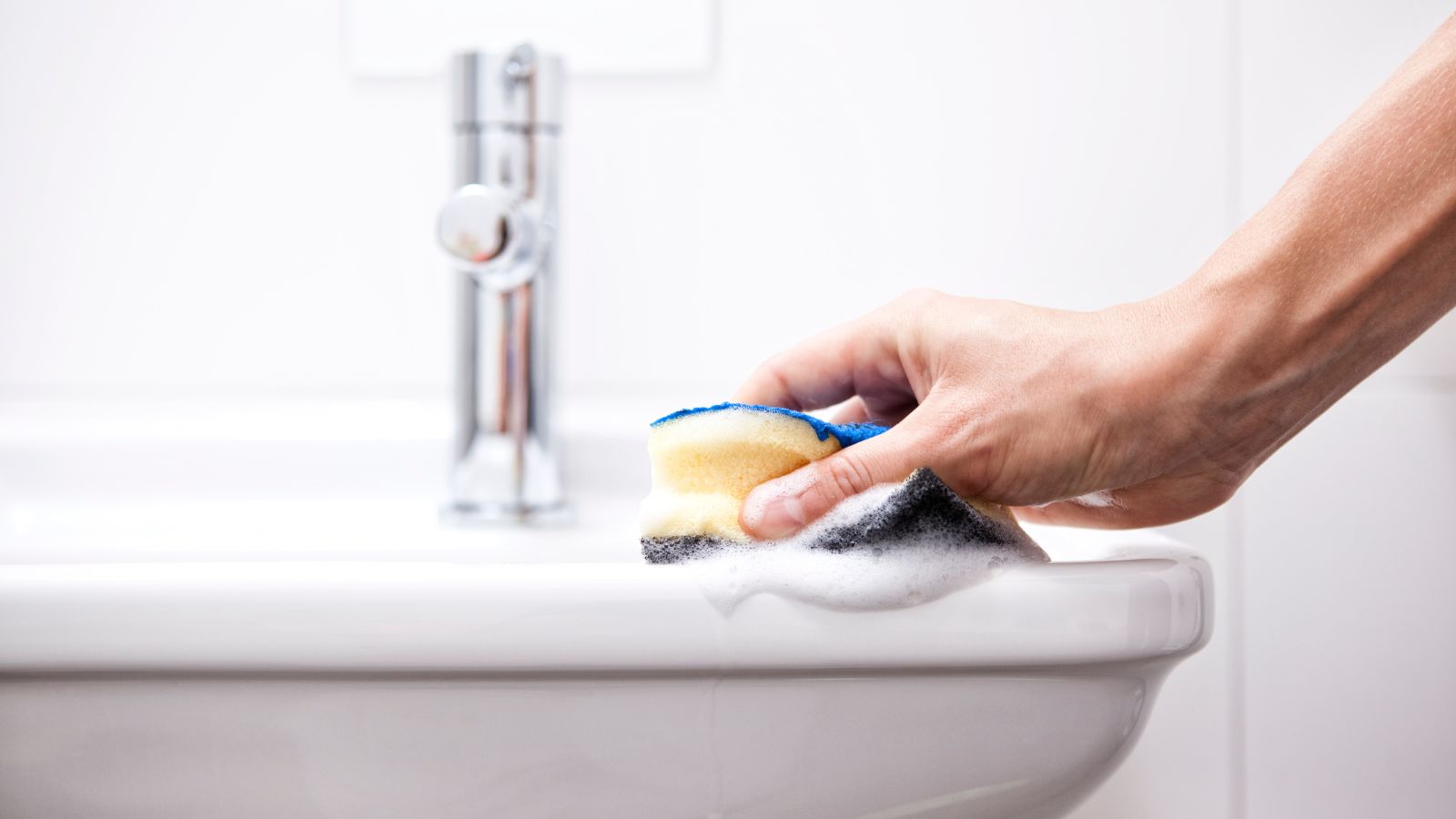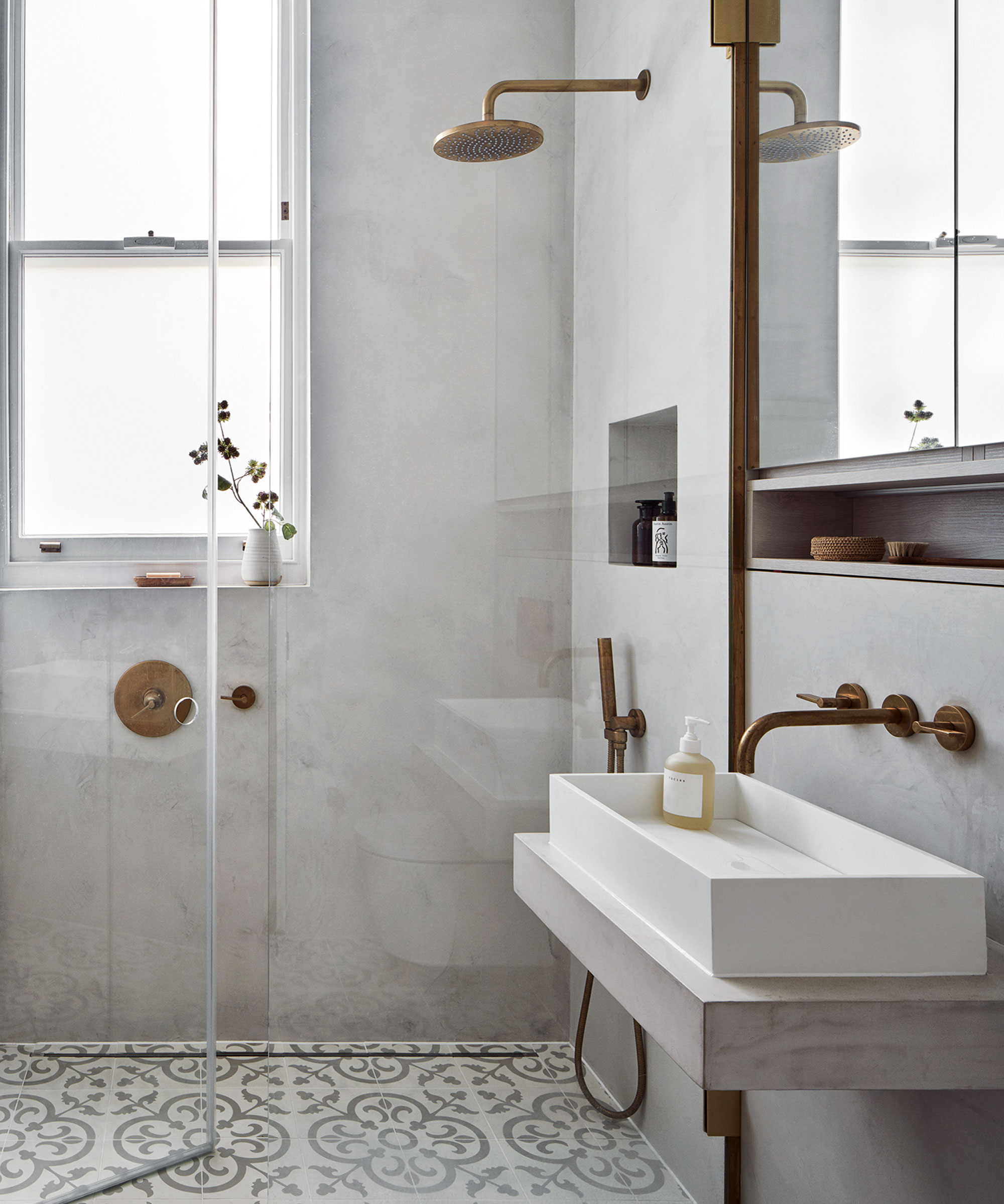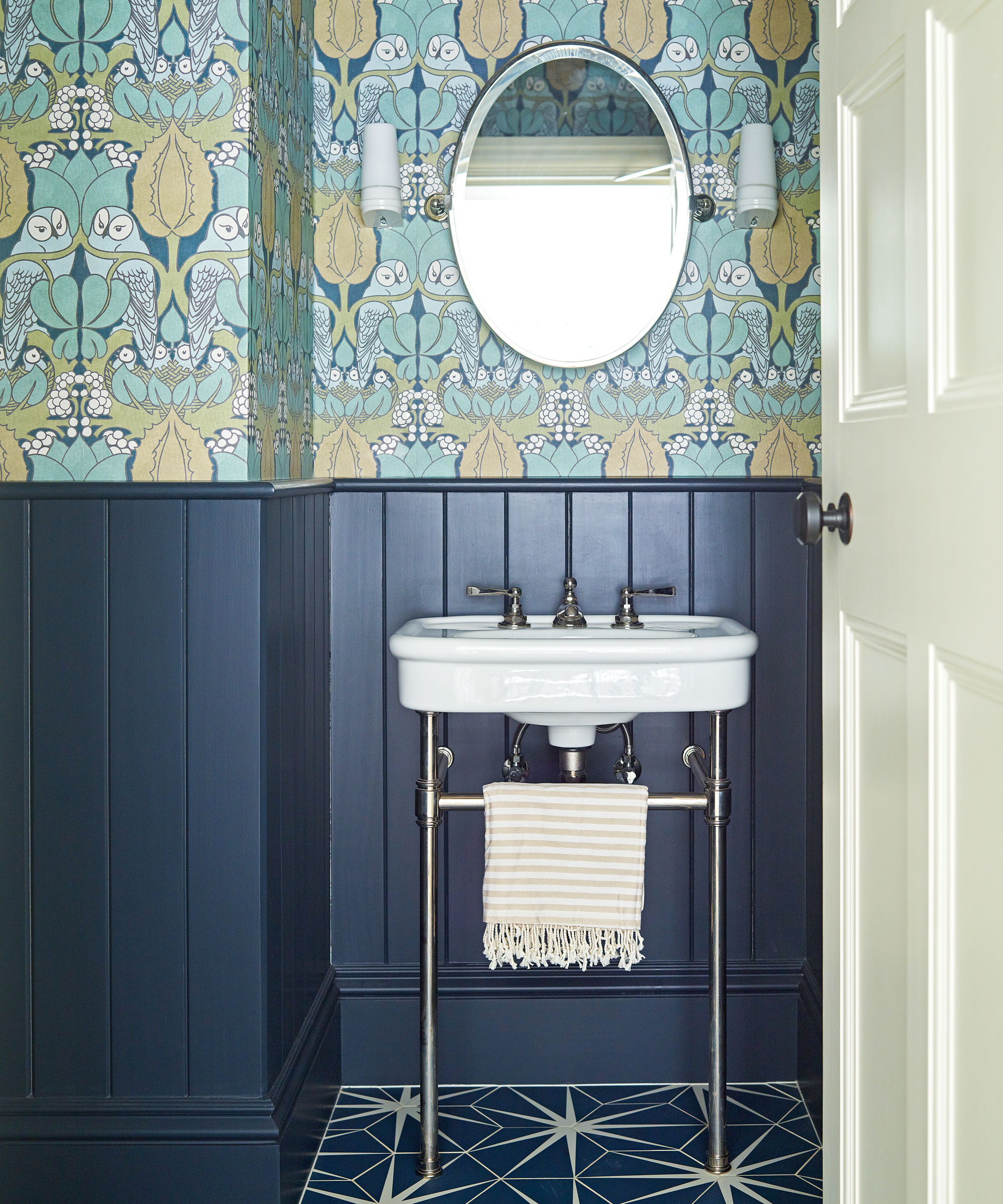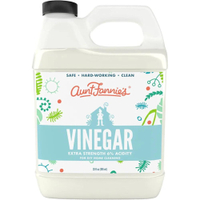Are hard water stains hampering your bathroom appeal? Here's how to remove them with ease
Cleaners explain 8 ways to remove hard water stains with ease – and only one product


Hard water stains are a nuisance at best with many household cleaners not touching tough build-ups. So how do you get rid of hard water stains and keep them at bay?
These tough marks only make cleaning a bathroom or cleaning a kitchen sink more difficult, but professional cleaners are clear that these stains shouldn’t spoil your otherwise spotless space.
There are plenty of ways to get rid of hard water stains – here are eight methods professionals recommend.
How to get rid of hard water stains
These eight cleaning tips for combatting hard water marks are super simple and reduce the time you spend on scrubbing, experts claim. What’s more, you likely already have some of these products in your cleaning cabinet!

1. Dawn dish soap
In the first instance, cleaning with Dawn powerwash can help to get rid of light stains and recently made marks, says Ryan Knoll, professional cleaner and founder of Tidy Casa. After spreading it evenly over the surface and allowing it to sit for 15 minutes, you can use a lightly abrasive sponge to scrub away build-up.
‘The Dawn Dish Soap and sponge method is simple but works exceptionally well on glass shower doors,’ he adds.
Dawn Powerwash Starter Bundle | $8.44 at Amazon
This Powerwash starter kit includes one complete Dawn spray bottle and one refill pack.

Ryan Knoll is the CEO and founder of Tidy Casa, a cleaning service that now spans multiple states across the US.
2. White vinegar
There are very few things you can’t clean with vinegar, and the non-toxic acid helps to break through odors, tough grease, soap scum, and alkaline-based hard water stains.
‘Acids dissolve alkaline deposits (e.g., minerals) so white vinegar can be a good choice on surfaces not harmed by acetic acid – make sure to test a small area first,’ says Allen Rathey, director of Indoor Health Council. ‘Keep the surface wet with vinegar for 30 minutes, then scrub deposits away using an abrasive scrubbing pad.’
Cleaning with vinegar is also helpful for more awkwardly shaped bathroom fixtures fixed to the wall, adds Lucy Henderson, professional cleaner and founder of Palladio Interiors.
‘You can fill a sandwich bag halfway with white vinegar, bring it up to the faucet/shower head so the head is immersed, and secure the sandwich bag by wrapping a thick rubber band around the top of the sandwich bag and the faucet/shower pipe,’ she explains. ‘Turn on the water to gently fill the bag with water until it's full. Let sit for a few hours before removing the bag. Wipe the area down with a clean sponge and plain water before drying.’
6% Distilled White Cleaning Vinegar | $11.99 at Amazon
This specially formulated white vinegar with cleaning strength at 6% acidity lifts grime and breaks down grease, mineral deposits, lime scale, and built-up film for a clean space with no residue left behind and no rinsing required.

Allen Rathey is a cleaning professional turned educator. He is the past president/owner of The Housekeeping Channel, The Healthy House Institute, The Healthy Facilities Institute (HFI) and HFI-U specializing in e-learning. He founded the International Custodial Advisors Network (ICAN), has served as an educational liaison for IEHA, and is Director of the Indoor Health Council.
3. Bar Keepers Friend
Bar Keepers Friend is a staple in professional cleaners’ cleaning kits for a reason. The fine powder is perfect for a range of tough cleaning jobs, from removing grease to breaking up limescale. It is especially useful for stubborn hard water stains that have been around for a long time, says professional cleaner Ryan Knoll.
To clean with Bar Keepers Friend, sprinkle it over the affected surface and wet it to activate, and allow it to foam, he says. Scrubbing in a circular motion will help to buff the stains out. Rinse away and the surface should look practically new.
One thing to note, however, is this cleaner's corrosive effects on the skin, Ryan adds: ‘Bar Keepers Friend is an oxalic acid cleaner, so wear cleaning gloves, at Amazon, especially for people with sensitive skin,’ he warns.
Bar Keepers Friend Original Powder | $11.41 at Walmart
This multi-surface cleaner is ideal for cleaning all metals including stainless steel, ceramic surfaces, laminates, tiles, plastics, and glass.
4. Borax
More commonly used when doing laundry, Borax can be used to remove hard water stains too, says pro cleaner Lucy Henderson. To do this, combine Borax with white vinegar until it forms a thick spreadable paste which you can apply with an old toothbrush onto the stain and allow it to sit for 20 to 30 minutes.
This method is particularly useful for toilets, she adds. Once the paste has been set, you can clean up by simply flushing the system through once or twice. It should take the stains with them.

Lucy Henderson is the cleaning specialist and interiors enthusiast behind Palladio Interiors, a home care blog. her goal is to help others achieve a more beautiful, peaceful and relaxing home.
5. A wet pumice stone
If you want a truly chemical-free clean, then a moistened pumice stone may be the best option for you. Used to delicately clean a porcelain sink, they can also be used to clean toilet pans, and baths. The trick is to wet the stone and use it on the right angle to get an efficient clean, says Johanes Bangao Godoy, cleaning expert at Liox. Holding it on a slanted angle will help to prevent scratching while also lifting tough marks.
6. Toilet bowl cleaner
Although there are plenty of bathroom cleaning hacks that don't work, using toilet cleaner for removing water stains in the bathroom is useful if nothing else has worked. When doing this, however, make sure that the surface is clear of any other chemicals or cleaners to prevent reactions.
‘Most people don't like the idea of toilet bowl cleaners being used outside the throne. Still, it's a common household hydrochloric acid cleaner almost all homes have, and it works magic on glass or porcelain with calcium build-ups,’ reassures Ryan Knoll, professional cleaner. ‘Just be careful using hydrochloric acid cleaners on sensitive surfaces because they can leave stains if misused.’
7. The Pink Stuff
Like much of the internet, we cannot get enough of cleaning with The Pink Stuff. It is fantastic at removing all manner of stains and marks around the home, with cleaning expert Johannes Bangao Godoy recommending its use for removing hard water marks from all over the house.
‘It is great for removing stubborn stains on tiles, ceramic, and grout,’ he says. ‘Apply a small amount to a damp cloth and work it into the stain before rinsing away – that’s all there is to it!’
We also like this paste for cleaning glass shower doors and even removing watermarks for a quick window-cleaning hack as the gentle abrasive is enough to remove build-up without scratching the surface.
All Purpose Cleaning Paste | $5.97 at Amazon
The Pink Stuff paste made cleaning easier than ever before. This paste helps save you time, space, and money with longer-lasting results than other commercial cleaning products.
8. Baking soda
Baking soda is a natural stain remover, especially when mixed with vinegar. These two simple ingredients create a powerful chemical reaction that releases carbon dioxide which helps to force minerals away from surfaces and leave a clean finish behind.
To do this, cleaning expert Johannes Godoy recommends making a thick paste from baking soda and vinegar and applying it to a stain to sit for half an hour. Afterward, wash away with hot water and wipe down with a cloth.
Why hard water stains occur

Hard water marks are notoriously difficult to get rid of, but what causes them in the first place? ‘Hard water marks, also known as hard water stains, are caused by the minerals in “hard water”,’ explains homemaker and cleaning specialist Jeniffer Smith of Urban Home Corner. ‘Hard water has a high mineral content, typically calcium, and magnesium, and affects around 85% of the United States.
‘When hard water evaporates or dries on any surface, it leaves behind these minerals on surfaces, resulting in unsightly stains. Hard water marks can be caused by a variety of factors, including:
- High mineral content in the water supply
- Using hard water to wash dishes or clothes
- Using harsh cleaning products that can damage surfaces and make them more susceptible to hard water marks

Jeniffer Smith is a homemaker and blogger with Urban Home Corner. A self-taught appliance expert, Jeniffer is now the go-to for organizing appliance queries on the blog, helping clients find affordable solutions to common home problems.
How to prevent hard water stains

Prevention is always better than cure, especially when it comes to saving time and energy. But how do you prevent something as inevitable as hard water stains without cutting back on your water use completely?
1. Opt for a surface protector like Rainx
A quick solution to keeping hard water stains at bay is to apply a surface protector like Rainx, at Amazon, a water repellent that will help water bead and roll away before drying, suggests cleaning expert Ryan Knoll of Tidy Casa. One downside to this is the need to reapply these products frequently, at least once a week, to keep them effective, he says.
‘You could pop it in a handy spray bottle to keep applications short and sweet,’ he recommends. ‘This will save hours of scrubbing later down the line.’
2. Consider drying surfaces after every use
Given you would treat any other household stain as soon as possible, why not treat hard water stains the same, asks homemaker Jeniffer Smith. Wiping down surfaces before the water has the chance to dry or evaporate will cut down the number of unsightly marks left after using sinks, washing dishes, or showering. You could use a dedicated soft cloth or towel, letting it dry between uses or a squeegee for glass shower doors.
'Regular cleaning will prevent hard water stains from building up. Use a mild cleaner and a soft cloth or sponge to avoid damaging the surface,' adds Jeniffer.
3. Invest in a water softener for long-term changes
Like installing a home water filter, a water softener is not the most affordable way of treating hard water stains, but it is the best if you want to protect both your home and your health. ‘The softener removes minerals from the water before it enters your home,’ Jeniffer Smith says. This can help if your tap water is cloudy, or your water tastes bad when you drink it from the tap.
FAQs
Does Coke remove limescale?
Limescale, or hard water stains, can be removed with Coca-Cola, especially in toilets and kettles due to its acidic qualities. One thing to note, however, is its relative ineffectiveness in comparison to other household cleaners such as vinegar, or Bark Keepers Friend.
Are hard water stains bad?
Hard water stains are harmless to your health, however, they can ruin the appearance of your bathroom or kitchen. Preventing these stains, or removing them before they build up too badly, will elevate the look of your space, and make household cleaning much easier in the long run.
Hard water stains can be difficult to remove around the home. However, good prevention and a mix of good cleaning solutions for water stains mean that those living in hard water areas aren’t doomed to unsightly specks across their home fittings.
Sign up to the Homes & Gardens newsletter
Design expertise in your inbox – from inspiring decorating ideas and beautiful celebrity homes to practical gardening advice and shopping round-ups.

Chiana has been at Homes & Gardens for two years and is our resident 'queen' of non-toxic living. She spends most of her time producing content for the Solved section of the website, helping readers get the most out of their homes through clever decluttering, cleaning, and tidying tips. She was named one of Fixr's top home improvement journalists in 2024.
-
 5 surprising but brilliant ways to clean with old socks – from perfectly buffing stainless steel to deterring pests naturally and more
5 surprising but brilliant ways to clean with old socks – from perfectly buffing stainless steel to deterring pests naturally and moreTackle dust in tricky corners, clean your mirrors and even banish bad odors with those rogue single socks
By Andy van Terheyden Published
-
 How to grow astilbe – expert advice on cultivating this shade-tolerant flowering perennial
How to grow astilbe – expert advice on cultivating this shade-tolerant flowering perennialShade-tolerant and pest-resistant - astilbe are hardy and tough perennials that can thrive in many settings
By Ellen Wells Published



